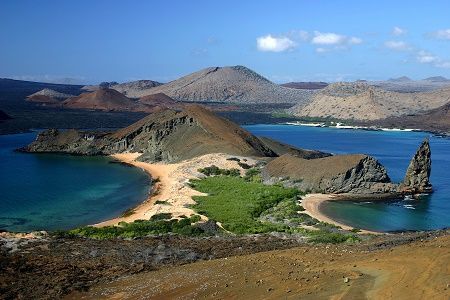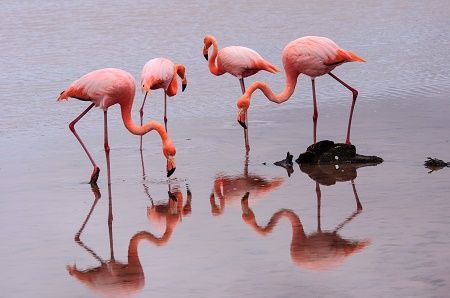Article
Galapagos Islands: An Animal Lover's Dream
Author(s):
On a cruise of the Galapagos Islands, 600 miles off the shore of Ecuador, you can watch sea lions, walk past colonies of blue-footed boobies, encounter 600-pound giant tortoises, and admire frigate birds and flocks of flamingoes. Exploring the UNESCO World Heritage Site is a dream vacation for animal-lovers.

On a cruise of the Galapagos Islands, 600 miles off the shore of Ecuador, you can watch sea lions, walk past colonies of blue-footed boobies, encounter 600-pound giant tortoises, and admire frigate birds and flocks of flamingoes. Exploring the UNESCO World Heritage Site is a dream vacation for animal-lovers.
The archipelago of 13 major islands and seven minor ones figured prominently in Charles Darwin’s formulation of his Origin of the Species. Darwin came to realize, in part because of his time in the Galapagos, that it was the most adaptable members of a species that were the ones to survive.
The Galapagos Islands sustain some unique wildlife, and the critters here, having evolved without predators, have no fear of people. We visited during Ecuador’s rainy season, January to June. Some of the islands during that period had sparser animals than during Ecuador’s dry season. However, during January to June Ecuador’s seas remain relatively calm and are warm enough for snorkeling without a wet suit—both important items to us. Since we are prone to seasickness, calm seas are much appreciated and since we love swimming, we could not be surrounded by water and not get in it. Although Ecuador’s dry season, July to December, has less rain, the water can be rougher than in the rainy season and swimming requires a wet suit.
On a cruise of the Galapagos, we typically toured an island in the morning and spent afternoons snorkeling and playing on the beaches and traveling to our next stop. The first morning at sea we awoke to a frigate bird perched captain-like atop the mast, a pelican on the bow and a school of luminescent pink grouper floating starboard.
Our tour included visits to four islands. At Hood, also known as Española Island, sea lion pups frolicked in the tide pools and full-grown ones lounged head to belly on the sand. We came to like Hood Island best for its abundant creatures. Scores of red and green dotted “Christmas” lizards, fat as house cats, hugged the gray rocks, soaking up the sun. Red crabs scuttled agilely from crevice to crevice. Gulls swooped overhead and the salt bush was full of finches.

The boobery was cliffside. The birds, with their neon-blue feet, like the heights and the sea spray. We followed our naturalist guide and even once had to step over a sea lion pup who’d wiggled her way into our path. On Floreana Island, from a distance, we spotted a flock of pink flamingos.
Our favorite memory: swimming with the sea lions. One afternoon soon after we jumped in the water, a pair of playful sea lions came down from the rocks along the beach and joined us in the sea. The slick creatures dove under us, disappeared, then resurfaced yards away. Another afternoon we sat at the shore with our legs in the water. A curious pup with friendly brown eyes jiggled over to us and slipped into the shallows. When we kicked the water, he splashed. We played together for about twenty minutes before he dove under and away, leaving us delighted and amazed.
INCA has been offering eco-adventures for more than 40-years. The company features 10 different itineraries to the Galapagos Islands.
What are your favorite wildlife-watching spots? Comment below or connect with me on Twitter, @familyitrips.




